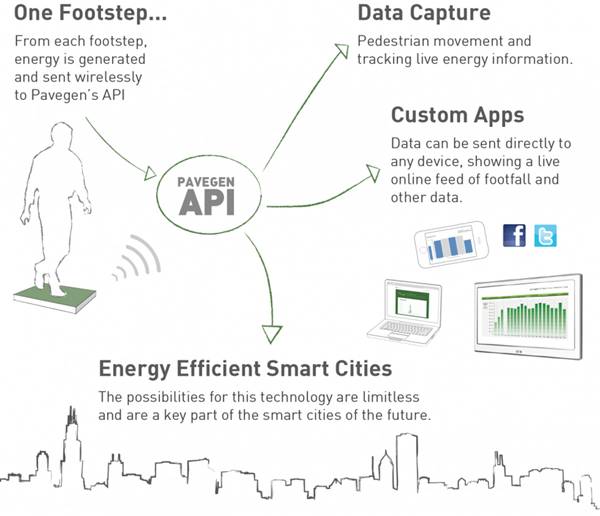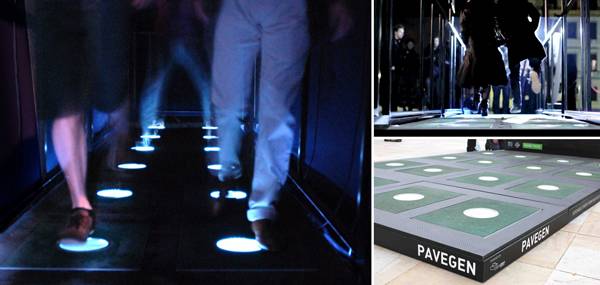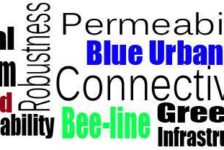Pavegen is a product that immediately catches the eye as an inventive and creative way to harvest the kinetic energy in footsteps on the pavement. As I write, I’m listening to the familiar sound of the pitter-patter beneath my desk, as my restless feet rattle on the floorboards to the far-off harmony of my town’s weekend orchestra of heavy-footed businessmen and shoppers’ chatter conducted by urban life. I think of how much energy I have wasted over time; in my mind’s eye, I see the countless steps taken in my bedroom alone, franticly pacing up and down on the eve of a deadline. Pavegen inventor Laurence Kemball-Cook’s product harnesses energy in a way that is unobtrusive and subtle. It’s a small product that shifts perceptions, ingraining a grassroots-level method of creating energy. The U.K.-based company Pavegen Systems really walks the walk when it comes to creating a path for green technologies — the 100 percent recycled rubber membrane works every time the pavement is stepped on, as the paver flexes 5 mm and “smart” technology stores the kinetic energy. Below: Innovation at everyone’s feet: Laurence Kemball at TEDxRio+20 The Selling Point Innovative, exceptional energy efficiency, superior sustainability. These are just some of the goals that Pavegen Systems might have had in mind when creating the prototypes for Pavegen. Its inner glow (about 5 percent of the overall energy produced) draws the attention of any passerby. Glowing pavement forms a new relationship people and paving, evoking imaginative thoughts; that your average Joe can generate energy empowers him with an increased awareness of energy consumption. The small and easy-to-retrofit slabs power streetlights with your usual surrounding electronics, while the smart pavers can connect with synced “smart” phones and devices.
If all that sounds intriguing, the slabs hit all environmentally friendly “brownie points”. The slabs come in various colors and are made of marine-grade stainless steel, with each slab constructed from old car tires and inner mechanisms made of recycled aluminium. But don’t think that Pavegen is just an expensive paving eco-irrelevance. When located in a busy street, each slab generates 2.1 watts per hour. Studies have shown that during peak time of five hours, Pavegen generates enough energy to power a bus stop for 12 hours. Energy can then be stored within the pavers’ lithium polymer batteries or sent back into the energy grid. Pavegen API The Pavegen API is a wireless interface that enables the Pavegen units to communicate with any software or hardware application, be it to record footfall data, record energy generation or to communicate to users via social media. The energy from the footstep will transmit data up to 200 meters depending on location, the energy can also be used to power lighting or be stored. Discover more about the Pavegen API here!
The Pavegen API is a unique wireless interface that enables the Pavegen units to communicate with any software or hardware application – See more













